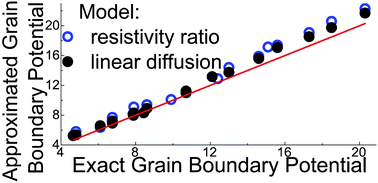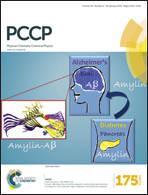On determining the height of the potential barrier at grain boundaries in ion-conducting oxides
Abstract
The validity and limitations of two quantitative approaches for estimating the height of the potential barrier at grain boundaries, Ψgb, in polycrystalline ionic conductors are examined both theoretically and experimentally. The linear diffusion model recently proposed by Kim and Lubomirsky determines Ψgb from the value of the power exponent of the current (Igb)–voltage (Ugb) relationship at the grain boundary, dln(Igb)/dln(Ugb), while the conventional approach calculates Ψgb from the ratio of the grain boundary resistivity to the grain core resistivity. The results of our theoretical analysis demonstrate that both approaches should yield consistent values for Ψgb if the ionic current through the grain boundary is limited exclusively by space charge. While the value of Ψgb obtained by the power law procedure is relatively insensitive to other causes of current obstruction, e.g. current constriction and/or local structural disorder, the resistivity ratio method, if not explicitly corrected for these additional limitations, results in a considerable overestimate of the grain boundary potential barrier. Hence, it is possible to distinguish between grain boundary resistance due to the presence of space charge and that due to additional sources by comparing the values of Ψgb determined using each of the two methods. Our theoretical analysis is confirmed experimentally with 3 mol% Gd-doped ceria with and without an additional source of current constriction across the grain boundary.


 Please wait while we load your content...
Please wait while we load your content...